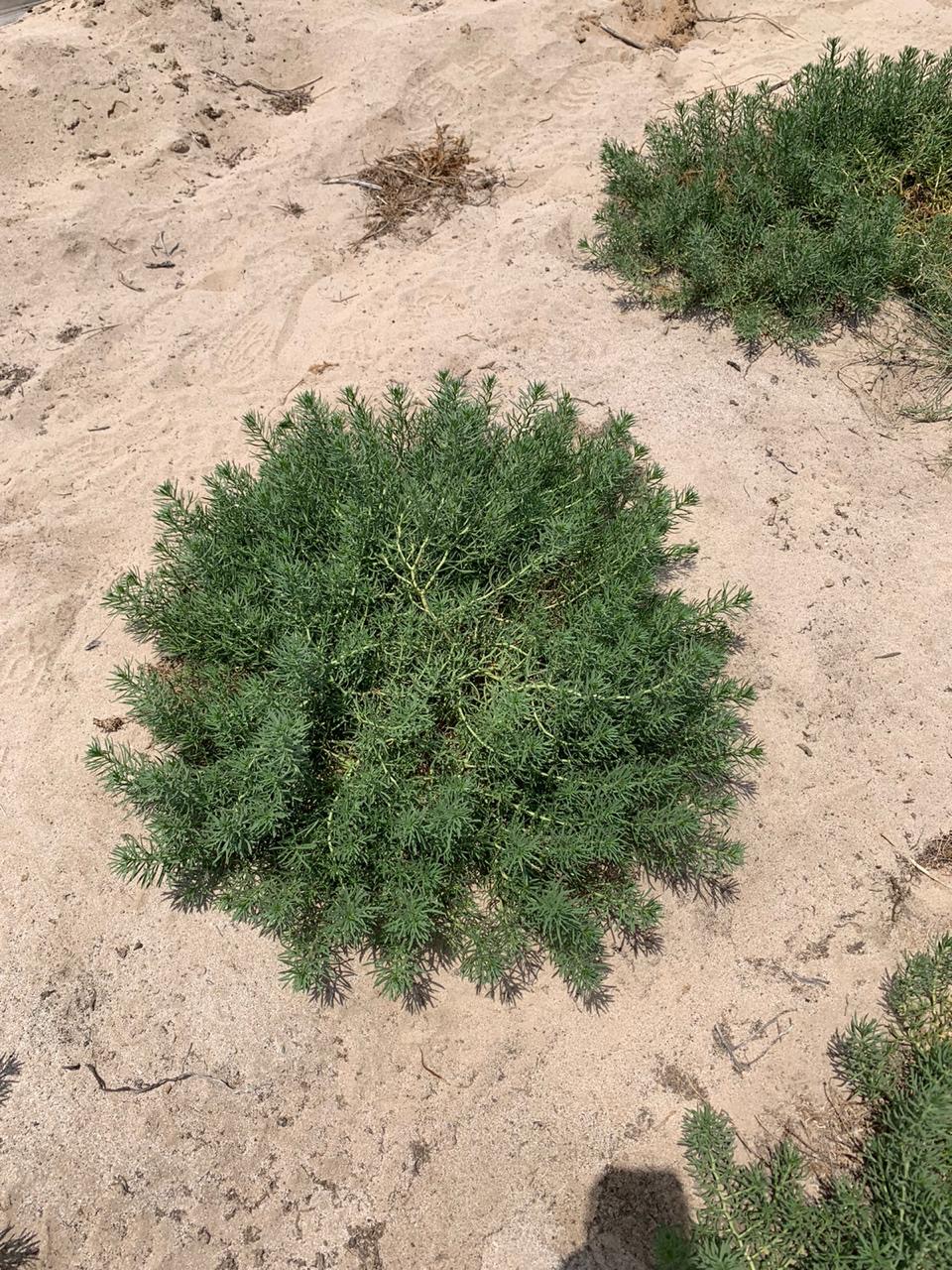His Highness Sheikh Hamdan bin Zayed Al Nahyan, the Ruler’s Representative in Al Dhafra Region and Chairman of the Environment Agency – Abu Dhabi (EAD), has directed the propagation of the Harmal(Peganum harmala)plant. This comesafter the Agency announced the discovery of the plant species for the first time in the Emirate of Abu Dhabi and the United Arab Emirates.
As such, the Peganum harmalaplant has now been included in the important local plant conservation and propagation programmes run by EAD’splant nursery in the Al Dhafra region’s Baynunah area.
Belonging to the hierarchical Peganumfamily, the newly discovered species iscompletely different from the Rhazyastrictaspecies previously registered and present in eastern Al Ain and many otherEmirates.
The importance of this finding also lies in the fact that a whole new genus (Peganum) has been added to the UAE’s flora, and increases the importance of the plant diversity of the Emirates. The new species is a distinctive plant usually growing in biogeographical regions of the Arab desert region, the Sindhi-Saharan regions, reaching the dry areas of the sea basin as well as the Mediterranean and Eastern Caucasus.
Her Excellency Dr. Shaikha Salem Al Dhaheri, Secretary-General of EAD indicated that, according to the directives of His Highness Sheikh Hamdan,Abu Dhabi plans to regularly monitor the areas of the new species, as well as collect, preserve and propagate it within the Agency’s plant nursery. The Agency plans to cooperate with specialised research centres and universities as it is one of the important wild medicinal plants that is internationally documented, and the species will also be added to the databases in Abu Dhabi and the UAE. Taxonomic samples will accordingly be collected and added to the Agency’s herbarium.
Peganum harmala is characterized as a perennial herbaceous plant that is heavily branched, with a length of 30-60cm. Its leaves are highly elongated and divided into narrow parts. Its single flowers are white in colour and develop three-chambered fruit with small black seeds.
The plant grows wild in most countries of the Arab world and the Mediterranean, especially in rocky areas in environments with relatively abundant rain. In the Emirate of Abu Dhabi, this species is spread in the Houbara Reserve between the Al-Marzum area and Madinat Zayed.



